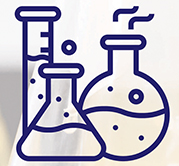Fluoropolymers are fluorocarbon-based polymers having solid bonds of carbon and fluorine. These polymers are either homopolymers or copolymers, and they have thermoplastic properties as they contain a semi-crystalline structure. This means that these polymers become viscous or liquid at specific temperatures, after which they can be molded and shaped according to need. Fluoropolymers also exhibit strong resistance to acids, bases, and solvents. As fluorine provides better stability than chlorine, fluoropolymers are impervious to conventional media.
Owing to all such advantages, they are widely used in the automotive and electrical and electronics sectors, which will aid the fluoropolymer materials market in advancing at a 5.1% CAGR during forecast period. According to P&S Intelligence, the market size was 336.9 kilotons in 2015. The electrical and electronics industry uses these materials, primarily polytetrafluoroethylene (PTFE), to coat and insulate electronic cables, data communication cables, and automotive cables and in jacketing and semiconductor fabrication.
Similarly, the automotive sector uses the thermoplastic and elastomer forms of fluoropolymers in the production of seals, O-rings, wire insulations, fuel tank filler necks, diaphragms, and vapor and fuel management hoses. Apart from this, the photovoltaic (PV) industry utilizes fluoropolymer materials in large quantities owing to their moisture resistance, photostability, chemical and environmental resistance, flexibility, durability, and electrical isolation. Essentially, the increasing installation of solar power plants owing to the advancements in technology, stringent government regulations, and rapid shift toward non-conventional energy will fuel the requirement for these polymers in the coming years.
The APAC fluoropolymer materials market is also set to witness the fastest growth in the foreseeable future, which can be primarily ascribed to the rapid industrialization in the region. Moreover, the expansion of the automotive, construction, and electrical and electronics industries will fuel the adoption of fluoropolymer materials in the coming years. Besides, the rapid infrastructure development, high living standards, and high purchasing power of people have led to the large-scale consumption of these materials.
Thus, the strong resistance offered by fluoropolymer materials against bases, acids, solvents, weather, and heat has led to their wide adoption in the electrical and electronics, PV, automotive, aerospace, and chemical and industrial processing sectors.





















